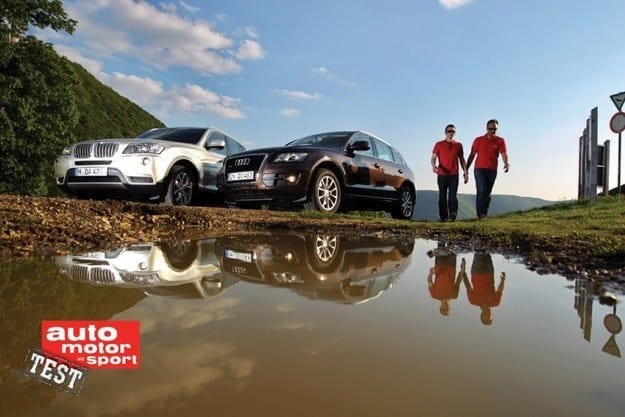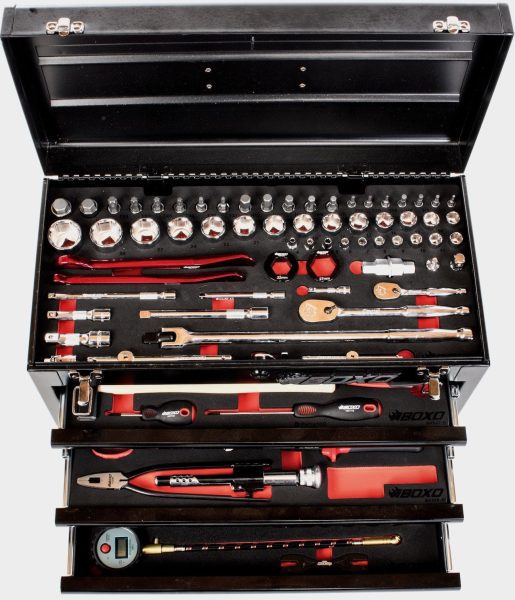
Test drive Audi Q5 3.0 TDI quattro against BMW X3 xDrive 30d: who swallows water?
Content

BMW soon expanded the X3 engine lineup with a 258-liter diesel unit with 5 hp. Will this move provide the desired advantage over the Audi Q3.0 XNUMX TDI Quattro?
Overhang angles, ground clearance, maximum depth of a water barrier ... And, here's the permissible depth. Maximum 500 millimeters. Quite enough. It is safe to cross small streams and shallow river fords, which are often found on mountain roads. A more serious obstacle in this case may be the understandable reluctance of the owners of Bavarian rivals X3 and Q5 to throw their beauty into murky waters and tarnish the beautiful 18-inch aluminum wheels that Audi and BMW are equipping these versions of the series with. their SUV models. Not to mention the danger of rough scratches on the glossy lacquered bumpers and the need for a thorough cleaning afterwards.
Measuring forces
Away from the dirt and pitfalls, the two prestigious SUV models have nothing to worry about. Six-cylinder diesels have more than a decent working volume of three liters with the corresponding characteristics in terms of power and torque - 258 hp. and 560 Nm for the X3 and 240 hp. respectively. and 500 Nm on Q5. With numbers like that, good acceleration and powerful traction are guaranteed, although when climbing steep mountainous sections, the Q5 clearly loses the lead to the new X3 xDrive 30d. Its inline six-cylinder engine pushes the 1925-kilogram SUV with such ease that the heavier 47-kilogram Audi model has to work hard to keep from falling out of sight.
In the 180 km / h sprint on the X3, it takes the Q5 over three seconds, and it becomes clear that the Ingolstadt V-car cannot compete with the smoothness of its regular rival at high speeds. Small consolation for Audi is the fact that the BMW diesel on the spot exhibits an unexpectedly harsh voice, while the Q3 engine can hardly be identified as diesel even on closer listening. Having reached the desired speed on the highway, the vocal performance of the two units goes deep into the background, and they cease to occupy you with themselves, gently performing their task at about 2000 rpm.
Advantages and disadvantages
Last but not least, stock automatic transmissions also contribute to smooth and quiet operation. Despite the different concept and design – the seven-speed dual-clutch transmission in Audi and the conventional eight-speed gearbox in BMW – both mechanisms perform equally convincingly with smooth, precise shifting and the right gear selection at all times. Both transmissions are sensible and (almost always) help the rider stay in gear in time if needed, or down two or three steps down steep sections.
We leave the highway and stop at the first traffic light in the city. In the BMW X3, peace and quiet is immediately ensured by the standard Start-Stop system. The latter does its job diligently and relentlessly, shutting down the engine at the first opportunity - frequent stops and starts can annoy more sensitive people, but certainly has its advantages, as our visit to the gas station quickly showed. An average of nine liters on the fairly dynamic main test route and 6,6L/100km on the standard AMS fuel economy route are extremely good numbers for a similar caliber dual-gearbox model. The Audi Q5, whose 3.0 TDI is not available in combination with the Start-Stop system, should stay a little longer on the charging station with its 9,9 respectively. 7,3 l / 100 km. This disadvantage naturally affects the Q5 rating in the environmental impact section.
On the ground
Tanks are full again, and the comparison can be continued - we are waiting for areas with many turns and uneven surfaces. Overall, test riders should be well-prepared for these conditions thanks to the adaptive damper suspension, which is available on request in both the X3 and Q5. In addition, the BMW model is equipped with a sport steering with variable characteristics depending on driving style and road profile. It's possible that this addition to the standard equipment is the main credit for the X3's advantage in this section, because with the corners climbing quickly in the selected section, the Audi model surprised us with its early understeer tendency and noticeable power tract nerves. on the operation of the steering system.
The X3 maintains a longer neutral cornering behavior, impresses with its quieter, significantly more precise steering wheel control, and is generally more dynamic on the road. Either way, both vehicles deliver a much sportier driving style than one might expect or ask for. In addition, in critical situations, they can rely on their perfectly tuned active safety systems with competent, gentle but decisive intervention when necessary. The stable operation of the braking systems and six airbags also deserves a positive assessment. The Audi model is already entering adulthood, but, unlike its Munich rival, it offers the option of ordering active driver assistance systems for servicing and changing lanes.
When it comes to comfort
For the comfort of the driver and passengers, take care of seats with leather upholstery (at an additional cost) that provide sufficient lateral support and high comfort in all seats. In addition, BMW seats are equipped with a extendable hip support and an electrically adjustable lower seat width.
Calmer riders can let the adaptive suspension do its job as normal and enjoy superior comfort and safe handling, making the Q5 and X3 a worry-free drive even over long distances. The space in the cabin of the two models of SUVs is also commendable, and luggage-friendly trunks are about the same size - 550 and 540 liters, respectively.
The Audi model receives additional points for its performance in terms of payload, driver's view and interior functionality. The rear seat backrest can be tilted in the Q5, and an optional longitudinal offset of 100 millimeters is available. BMW counteracts 2,4 ton towing and a practical compartment under the boot floor. And since the X3 and Q5 are expected to perform equally well in terms of performance and quality, the Ingolstadt model wins in the body rating section.
Quality has a price
All this luxury comes at a price. Audi is asking for at least BGN 3.0 for its 87 TDI Quattro, while BMW is only asking BGN 977 more for its more powerful 7523bhp. car. Both have standard equipment, including an audio system with CD player, automatic air conditioning, plenty of storage space for small items in the cabin, and 18-inch aluminum wheels. All other wishes will have to be guided by the lists of additional equipment, which, by the way, are quite similar for both models. And one last detail - both SUV models coped with the water barrier without any problems ...
Text: Michael von Maydel
a photo: Hans-Dieter Zeufert
Evaluation
1. BMW X3 xDrive 30d - 519 points
The extremely powerful yet economical diesel engine made the most significant contribution to the victory of the slightly narrower cabin of the X3. There is no denying the positive qualities of the precise steering system and the extremely comfortable suspension. Ergonomics and quality of performance raises no objections. In terms of base price and the cost of additional equipment, the X3 and Q5 are pretty close.
2. Audi Q5 3.0 TDI quattro - 507 points
Bigger and very good as a safety measure, the Q5 is forced to concede in terms of quality to its competitor from BMW. The reasons for this lie in a very voracious engine, jittery steering and noise that reaches the ears of passengers when driving on areas with poor coverage. The loss of the model from Ingolstadt is also to blame for the fuel consumption of the test section of the APP and the forecast of less favorable terms of sale in the secondary market.
technical details
| 1. BMW X3 xDrive 30d - 519 points | 2. Audi Q5 3.0 TDI quattro - 507 points | |
|---|---|---|
| Working volume | - | - |
| Power | 258 k.s. at 4000 rpm | 240 k.s. at 4000 rpm |
| Maximum torque | - | - |
| Acceleration 0-100 km / h | 6,3 with | 7,0 with |
| Braking distances at a speed of 100 km / h | 38 m | 37 m |
| full speed | 230 km / h | 225 km / h |
| Average consumption fuel in the test | 9,0 l | 9,9 l |
| Base Price | 95 500 levov | 87 977 levov |
Home " Articles " Blanks » Audi Q5 3.0 TDI quattro vs BMW X3 xDrive 30d: who swallows water?
